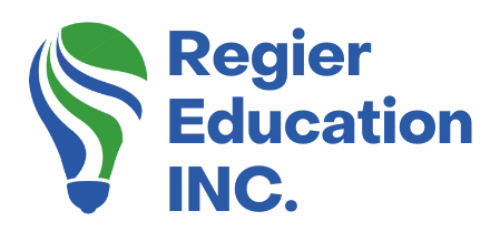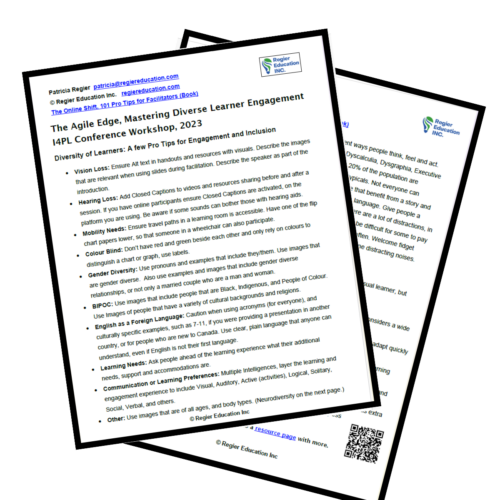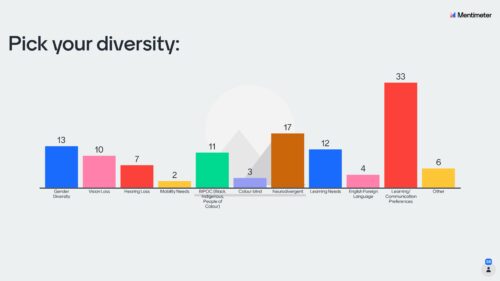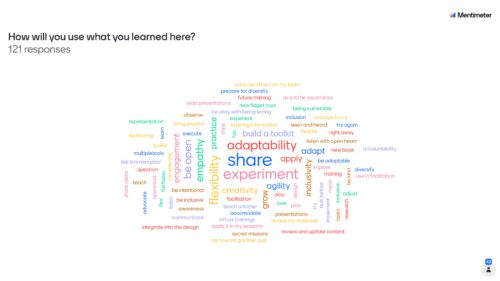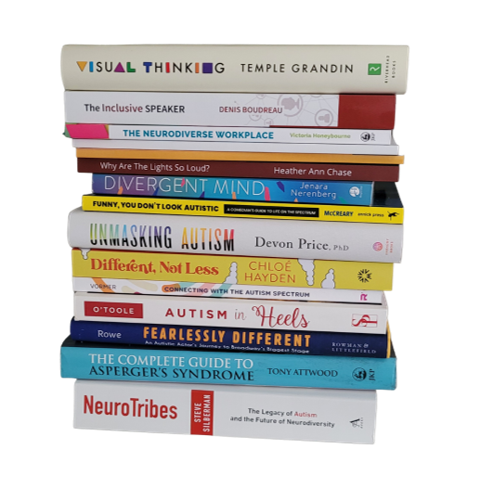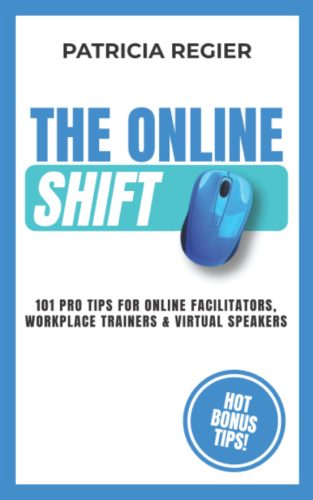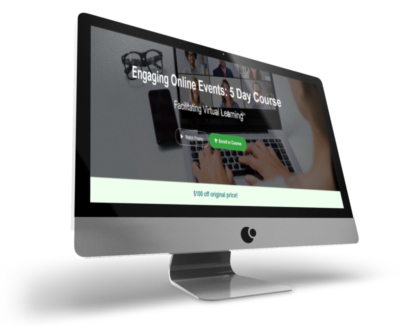Thank you for attending The Agile Edge Workshop!
Mastering Diverse Learner Engagement with Agile Facilitation.
This resource page provides additional information related to the workshop or learning experience.
You were a fantastic group!! Thank you! If you have additional questions, please email me at patricia@regiereducation.com
Please click the image below to download a two-page resource, which is packed with added value. Enjoy!
Who was in the room
People attending this workshop self-identified as (image above and list below reflect the same information):
- 13 Gender Diverse (This was not defined)
- 10 Vision Loss
- 7 Hearing Loss
- 2 Mobility Needs
- 11 BIPOC (Black, Indigenous, People of Colour)
- 3 Colour Blind
- 17 Neurodivergent
- 12 Learning Needs
- 4 English as a Second Language
- 33 Learning Communication Preferences
- 6 Other
What you said you would do with this learning:
Some of the most shared words and goals were:
- Adaptability
- Share
- Experiment
- Adapt
- Apply
- Agility
- Empathy
- Flexibility
- Build a toolkit
- Be open
- Engagement
- Grow
- Creativity
- Prepare for Diversity
Additional videos you may be interested in:
HOT PRO TIPS for The Facilitator’s Agile Edge
- Make a plan, but be flexible.
- Show confidence, even though trying new things may feel a bit scary
- Give clear instructions and communication about expectations
- Give alternative options to be accessible and inclusive
- Start where you are, and sprinkle some adventure in your next workshop. Try and try again.
- This is an older blog but packed with information about how to pick an icebreaker or energizer activity: http://www.regiereducation.com/icebreakeractivity/
- Don’t make assumptions, and be aware of your bias. You may be a visual learner but include other ways people prefer information.
- Consider all the different learning needs.
- Intentionally facilitate a safe and inviting environment that supports and considers various diversity needs and inclusion.
- Ask your group what their needs are, ahead of time or during the session, to adapt quickly and support the needs in real-time.
- Follow up with additional resources, considering what needs arose during the learning experience, and adapt for next time to include what may have been missed.
- It takes effort, but it’s worth it. For example, adding Alt text to images for handouts and ensuring that the document has gone through an accessibility checker is important. However, don’t drop all the images on a slide deck because you must take this extra step. Don’t become boring again – but also give yourself the grace for progress over perfection, but keep trying to do more.
Our Assumptions and Bias may be:
(From our Workshop Debrief)
- That the learners want to be there, they may have to be there
- That people are comfortable advocating for themselves, they may not be
- That diversity is not an issue; we may not be aware of the needs in the room
- That talking louder helps, it often doesn’t
- What it means to be on a spectrum, for example if you have met someone on the Autism Spectrum, you have met one person
- That we know what different learning needs or accommodations are, we may not, we should ask and invite
- If someone is BIPOC, it is not their responsibility to teach everyone how to be more inclusive
- That the snacks and treats are good for everyone, ensure that nut-free and sugar-free options are available (and more)
Diverse Learners – Who does this include? Some ideas:
These activities or titles can also spark your creativity to develop an activity that fits your content and context. Think Head, Heart, Hand – have a purpose for your activities.
-
- Vision Loss: Ensure Alt text in handouts and resources with visuals. Describe the relevant images when using slides during facilitation. Describe the speaker as part of the introduction.
- Hearing Loss: Add Closed Captions to videos and resources sharing before and after a session. If you have online participants, ensure Closed Captions are activated on the platform you are using. Be aware if some sounds can bother those with hearing aids.
- Mobility Needs: Ensure travel paths in a learning room are accessible. Have one of the flip chart papers lower so that someone in a wheelchair can participate.
- Colour Blind: Don’t have red and green beside each other and only rely on colours to distinguish a chart or graph; use labels.
- Gender Diversity: Use pronouns and examples that include they/them. Use images that are gender diverse. Also, use examples and images that have gender-diverse relationships, or not only a married couple who are a man and woman.
- BIPOC: Use images that include people who are Black, Indigenous, and People of Colour. Use Images of people that have a variety of cultural backgrounds and religions.
- English as a Foreign Language: Caution when using acronyms (for everyone), and culturally specific examples, such as 7-11, if you were presenting in another country or for people new to Canada. Use clear, plain language that anyone can understand, even if English is not their first language.
- Learning Needs: Ask people ahead of the learning experience what their additional needs, support and accommodations are.
- Communication or Learning Preferences: Multiple Intelligences layer the learning and engagement experience to include Visual, Auditory, Active (activities), Logical, Solitary, Social, Verbal, and others.
- Other: Use images that are of all ages and body types.
- Neurodiversity: Refers to the different ways people think, feel and act. Examples are Autism Spectrum, ADHD, Dyspraxia, Dyscalculia, Dysgraphia, Executive Functioning Disorder and Tourette’s Syndrome. 10 to 20% of the population are neurodivergent. Our world is often structured for neurotypicals. Not everyone can understand an analogy, it’s still OK to use them, for those that benefit from a story and example, however, add on explanations that clarify in plan language. Give people a chance to think and process information. Consider that if there are a lot of distractions, in an auditory or visual way (noise in the environment), this can be difficult for some to pay attention. Don’t use blinking items or animations in slides, too often. Welcome fidget resources, or support is someone is using ear plugs to block some distracting noises.
Online, Onsite, and Hybrid / Blended Audience Contexts
- Ask questions, plan a lot, and work with a team (especially when hybrid).
- Don’t forget to plan the learning experience journey before, during and after the event or training.
- Hybrid: This will take extra work and a team; there are many things to consider. Don’t forget the people online; ensure they can be heard, seen, and valued as participants. Think about all the senses and diversity of learners in the rooms – because you are not all in the same ‘room.’
- Always ask for the outcomes and purpose for each group with a blended audience or if the participants are all onsite or all online. How will you get there, and how will they know it?
- Online: Always cover navigation; even if everyone ‘knows everything,’ there is always someone who doesn’t. If someone is new to a workplace team, they may know a lot about the online platforms, but they don’t know the culture yet. Does everyone use chat? What engagement tools do you typically use or already know how to use? If trying something new (which is good), leave room, space and time for learning how to use the engagement tool. Think about all the senses and diversity of learners in the room.
- Onsite: Bring stuff if you can. For example, Play-Doh seems to always be a hit with adults! Think about all the senses and diversity of learners in the room.
- More will be added in this section soon.
Answer to your question.
- I am sorry that I am not sure I caught your name. One of you was going to email me. You asked for suggested wording for inviting people to touch, use, and access the resources on the table: “Welcome before we get started today, I invite you to use the play-doh, crossword puzzle, and get to know you items at your table.”
I forgot to share
I have had some success with using LOOP earplugs to remove some loud sounds in a room. Just an FYI.
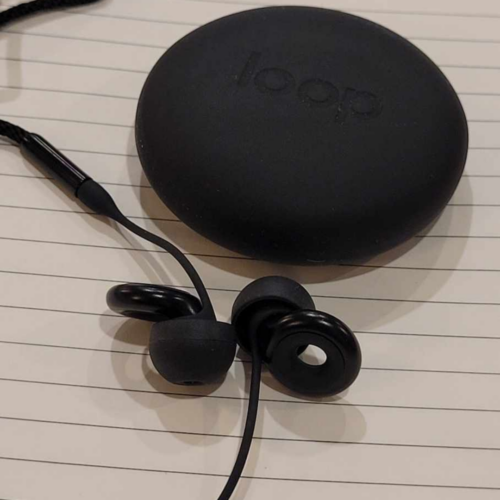
References and Books
- My Masters is in Adult Education (2015); therefore, I have a lot of excellent textbooks I still reference.
- I have been immersing myself in this topic for a while through courses, webinars, seminars, podcasts and books. Here are a few books to check out:
- The Neurodiverse Workplace, Victoria Honeybourne
- The Inclusive Speaker, Denis Boudreau
- Visual Thinking, Temple Grandin
- I have 15 books about the topic of Neurodiversity I need to thoroughly read, here is a picture of the stack of books:
Engagement Activity Ideas & Resources
- Icebreaker, get to know you options when you first walked into the in-person/on-site workshop:
- Thumballs: https://www.amazon.ca/Distribution-Solutions-Thumball-Who-4-Inch/dp/B001G073QM
- Conversation Cubes: https://www.amazon.ca/Learning-Resources-LER7300-Conversation-Cubes/dp/B001SH7SS6
- Create your own word search: https://mywordsearch.com/687916/Pick-Your-Own-Adventure
- Buy a larger dice from the Dollar Store and creat your own questions: Example made in Canva
Some of you asked.
It was a pleasure to have your participation in the workshop! Since we have met, I wanted to share these additional options that I think you will love:
Get your copy of my book
Facilitator Course: Turn your audience into participants
If you bought the book already, or will… here is an extra special option for you.
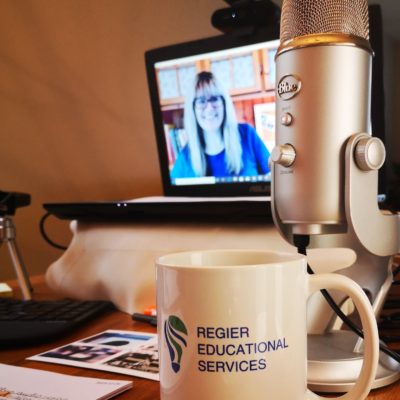
Patricia Regier is the Online Expert who’s built a career on the belief that training and online learning doesn’t have to be boring. As Owner of Regier Education Inc. and with a Master of Adult Education, Patricia is known for making her participants feel empowered and engaged. Her debut book and keynote, The Online Shift, teaches newcomers to the online space and seasoned professionals alike how to optimize their online facilitation and maximize engagement. She’s tried, tested, and refined using the latest research and tech trends to ensure your next online experience is a hit!
Services include Facilitation/Speaking, Consultations, Technical Production and more.
Engage Your Audience
- Sign-up for Facilitator Tips & Resources email member news
- Subscribe to our YouTube channel!
- Follow on Twitter & Instagram
- Like us on Facebook
- Pin this on Pinterest
- Share on LinkedIn
- Listen as a Podcast
- Take the Learning Preferences QUIZ
If you don’t find an appointment that fits your calendar, please email me: patricia@regiereducation.com
